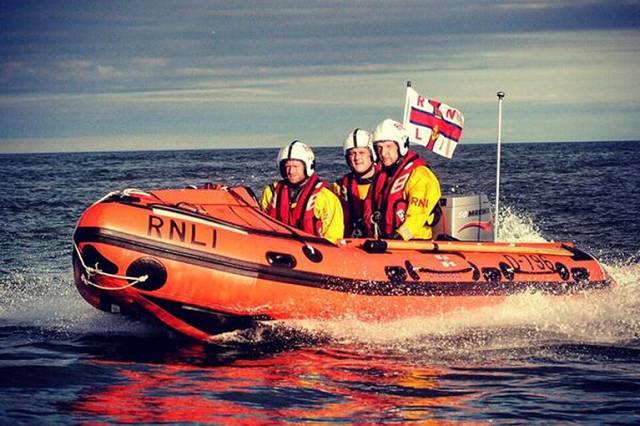Members of Howth RNLI lifeboat will gather at the lifeboat station this Sunday (2 October 2016) to name their new inshore lifeboat Aideen Cresswell in memory of the incredible woman who funded it. Aideen Cresswell (nee Stokes) was born in London in 1921 to Irish parents but came to live in The Baily, Howth. At a young age she met her husband John Cresswell at an RNLI ball and they spent their honeymoon on board a yacht sailing from Dublin to Waterford.
Mrs Cresswell passed away in 2011after a short illness but she will be remembered during the naming ceremony and service of dedication for Howth RNLI’s new inshore lifeboat. She will be represented at the ceremony by her two nephews, Andrew O’Hanlon and Seymour Cresswell, who will hand the new lifeboat into the care of the RNLI and officially name the inshore lifeboat Aideen Cresswell after their aunt.

Following the ceremony the new lifeboat will launch in Howth Harbour to the accompaniment of a lone piper. The well-known Dublin lifeboat station was established before 1825 and taken over by the RNLI in 1862. During its tenure Howth’s volunteer lifeboat crew have been awarded eleven medals for Gallantry: seven silver and four bronze. The station also operates an all-weather lifeboat.
The inshore lifeboat remains the workhorse of the RNLI as it has for nearly 50 years. The inflatable rescue craft is highly manoeuvrable and specifically suited to surf, shallow water and confined locations – often working close to cliffs, among rocks or even in caves.
Equipment includes VHF radio, night-vision equipment, and first-aid kit including oxygen. It has a maximum speed of 25 knots and can carry three crew members and five survivors.
Colm Newport, Howth RNLI Lifeboat Operations Manager said: ‘We are grateful to our donor for her generous gift which has funded our new lifeboat and we look forward to welcoming representatives of her family to Howth to share this day with us. Our volunteer lifeboat crew will be proud custodians of this search and rescue vessel for many years to come.’
‘We hope people will come down and join us for the ceremony and see the wonderful legacy Mrs Aideen Cresswell has left the people of Howth.’































































